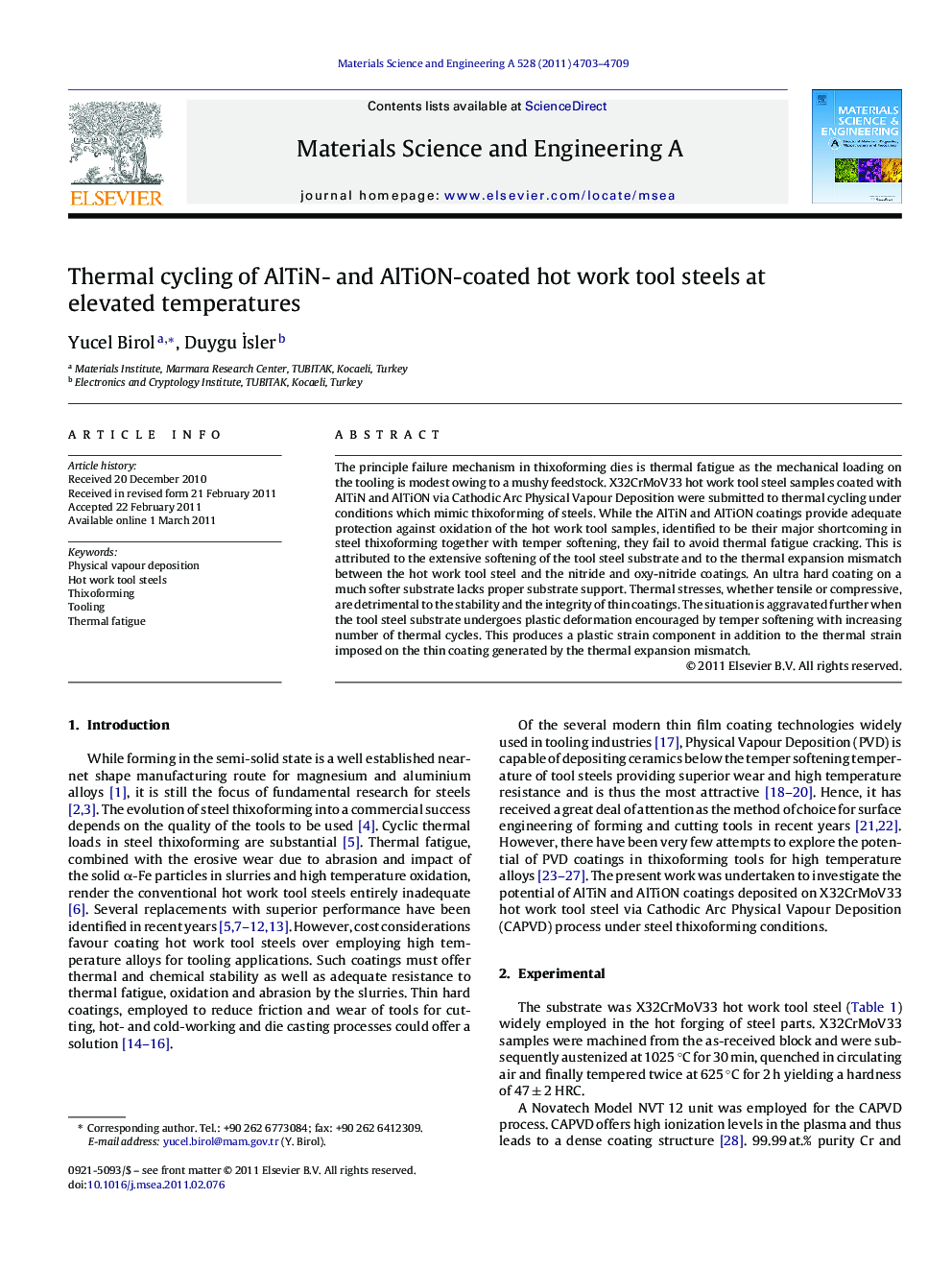| Article ID | Journal | Published Year | Pages | File Type |
|---|---|---|---|---|
| 1578743 | Materials Science and Engineering: A | 2011 | 7 Pages |
The principle failure mechanism in thixoforming dies is thermal fatigue as the mechanical loading on the tooling is modest owing to a mushy feedstock. X32CrMoV33 hot work tool steel samples coated with AlTiN and AlTiON via Cathodic Arc Physical Vapour Deposition were submitted to thermal cycling under conditions which mimic thixoforming of steels. While the AlTiN and AlTiON coatings provide adequate protection against oxidation of the hot work tool samples, identified to be their major shortcoming in steel thixoforming together with temper softening, they fail to avoid thermal fatigue cracking. This is attributed to the extensive softening of the tool steel substrate and to the thermal expansion mismatch between the hot work tool steel and the nitride and oxy-nitride coatings. An ultra hard coating on a much softer substrate lacks proper substrate support. Thermal stresses, whether tensile or compressive, are detrimental to the stability and the integrity of thin coatings. The situation is aggravated further when the tool steel substrate undergoes plastic deformation encouraged by temper softening with increasing number of thermal cycles. This produces a plastic strain component in addition to the thermal strain imposed on the thin coating generated by the thermal expansion mismatch.
► AlTiN and AlTiON provide adequate protection against oxidation of tool steel. ► However, they fail to avoid thermal fatigue cracking. ► This is attributed to the extensive softening of the tool steel substrate and to the thermal expansion mismatch with the tool steel substrate. ► An ultra hard coating on a much softer substrate lacks proper substrate support.
